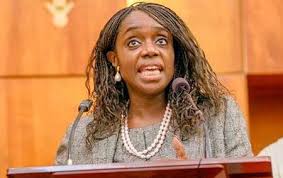State Level Fiscal Sustainability Plan (1).
-
July 5, 2016
- Posted by: Center for Social Justice

The Fiscal Sustainability Plan, the framework for the sustenance of state governments in Nigeria, which is a product of an agreement between federal and state governments, has been hailed as a strategic game changer for fiscal governance at the state level. It seeks to improve transparency and accountability, increase public revenue, rationalise public expenditure, improve public finance management and facilitate sustainable debt management. These are laudable goals that should be supported by all discerning Nigerians. This discourse seeks to review the plan and make recommendations on how best to ensure that the goals of the plan are realised.
The first point to note is that states are in dire financial straits today because of poor management of fiscal and other resources. Funds meant for development have been stolen outright and laws and policies, where they exist, have been ignored. In some states, there is an absence of good fiscal laws and policies to facilitate good fiscal governance. It may be recalled that there was a State Economic Empowerment and Developing Strategy benchmarking exercise which held twice during the administration of President Olusegun Obasanjo. Under this benchmarking exercise, the entire fiscal, economic and governance frameworks of states were reviewed in line with set standards and good and fit practices. States were encouraged to reform so as to perform better in subsequent benchmarking exercises. Most of the action points under the new Fiscal Sustainability Plan fitted into items under the previous benchmarking exercise which was to a great extent proactive, rather than the current reaction to a fiscal crisis. However, this came to an abrupt end as soon as the Obasanjo administration exited.
It will also be recalled that during the Yar’Adua Presidency, states were encouraged to enact Fiscal Responsibility and Public Procurement laws that were in accordance with best practices. Model state level laws were drafted and circulated among the states for possible adoption. These two laws contain far-reaching reforms that even go beyond some of the recommendations in the Fiscal Sustainability Plan. And within that era, federal and state governments had four-year plans that provided a framework for budgeting and programming. However, as of today, less than 50 per cent of the states have enacted Fiscal Responsibility and Public Procurement laws. Even in the states that have enacted them, they did so to satisfy all righteousness as none of them has fully implemented the standards required by the laws. For instance, no state has a functional Fiscal Responsibility Commission with powers and resources to prevent fiscal malfeasances or hold the executive to account. On the other hand, procurement reforms have been on paper as procurement continues to provide the environment for unmitigated contract scams.
One of the milestones in Objective 1, which is about improving transparency and accountability is to publish the annual budget and quarterly budget implementation reports. It is however surprising that the date for full compliance is postponed to March 2017. What does it take to upload an already prepared budget to a website that demands this length of time? Also, preparation and publication of budget implementation reports should be an immediate task to inform citizens of budget performance. Clearly missing in the plan is the link between accountability, transparency and participation. The Plan makes no demand of the states to open up their fiscal governance to popular participation. This is not good enough. Without participation, this leg of the reform is an exercise in “technicalising” a challenge which can be resolved by the people on their own terms. Publishing annual audited reports within 6 months makes eminent sense and is already a requirement in many state laws, but the challenge is that of non-compliance. Adopting International Public Sector Accounting Standards and software are also good for fiscal transparency.
Stares are enjoined to set realistic and achievable targets to improve independently generated revenue (from all revenue generating activities of the state in addition to tax
collections) and ratio of capital to recurrent expenditure by 2016. They are to implement the targets by June 2018; and adopt the Treasury Single Account model by the end of 2016. Wait a minute, by June 2018, the governors elected in 2015 would have less than a year before the expiry of their tenure. This date for implementation does not show any seriousness. States are to review all revenue related laws and update obsolete rates and tariffs. Setting targets for improved revenue collection is a great idea, but it must be done with certain assumptions including that residents of the state have the capacity and are ready and willing to pay taxes and rates. For there to be increased revenue generation, the level of fiscal transparency must increase because most Nigerians are not yet convinced that their state governments judiciously manage allocations from the Federation Account and as such, are unwilling to add their hard earned income to the pool for increased looting by the state government apparatus. Further, in reviewing obsolete tariffs, cognisance must be taken of the economic reality where the disposable income of the average Nigerian has diminished tremendously from the combined effect of the high level inflation and a naira that has lost its value – all these in the context of stagnant wages and reduced profitability of the private and informal sectors of the economy.
In setting realistic and achievable targets of capital to recurrent expenditure, there are clear challenges to be overcome. A situation where the federal constitution empowers the Revenue Mobilisation Allocation and Fiscal Commission to fix uniform salaries and perks of office for governors, legislators and other high level political office holders across the federation cannot facilitate the setting of a realistic target. There is no reason whatsoever justifying uniform salaries for political office holders in states that have high levels of the IGR and those that cannot afford to pay the salaries of civil servants. The remuneration of political office holders should be based on the ability of the state to pay and not some imaginary equality between the states. Thus, a constitution amendment will be needed to remove the powers of the Revenue Mobilisation Allocation Fiscal Commission in setting these uniform packages. How can very poor states justify the long convoys of their governors and the charter of aircraft for routine assignments? If this power is left to state agencies, it requires a good deal of public vigilance and participation to set realistic remuneration for state level political office holders.
There are also questions that need to be addressed before we roll out the Treasury Single Account across the spectrum. What experience and lessons have we derived from the implementation of the TSA at the federal level? Do the lessons suggest urgent need for replication at the state level? How will the full implementation of the TSA across all states of the federation impact on the financial institutions and their ability to grow credit to the economy? What will be the full implications for monetary policy in our economy that is virtually on recession? A clear headed analysis is needed and not the one-size fits all prescription which seems to be the case as of now. The other milestones in Objective 1 about financial reconciliation between federal and state level agencies, databases and immediate issuance of certificates on VAT and withholding tax are mere procedural matters that should have been done without any special announcement.
To be continued
